How Seattle city slicker Ed Marquand created an arty oasis in a rural Yakima Valley town
These days, thanks to our super-hero-obsessed pop-culture, everyone is looking for (and marketers pray for) a great origin story.
Fortunately, Mighty Tieton, an unlikely arts organization blooming in Washington state’s Yakima Valley, comes with one. There’s even a villain. Well, a prickly customer, anyway.
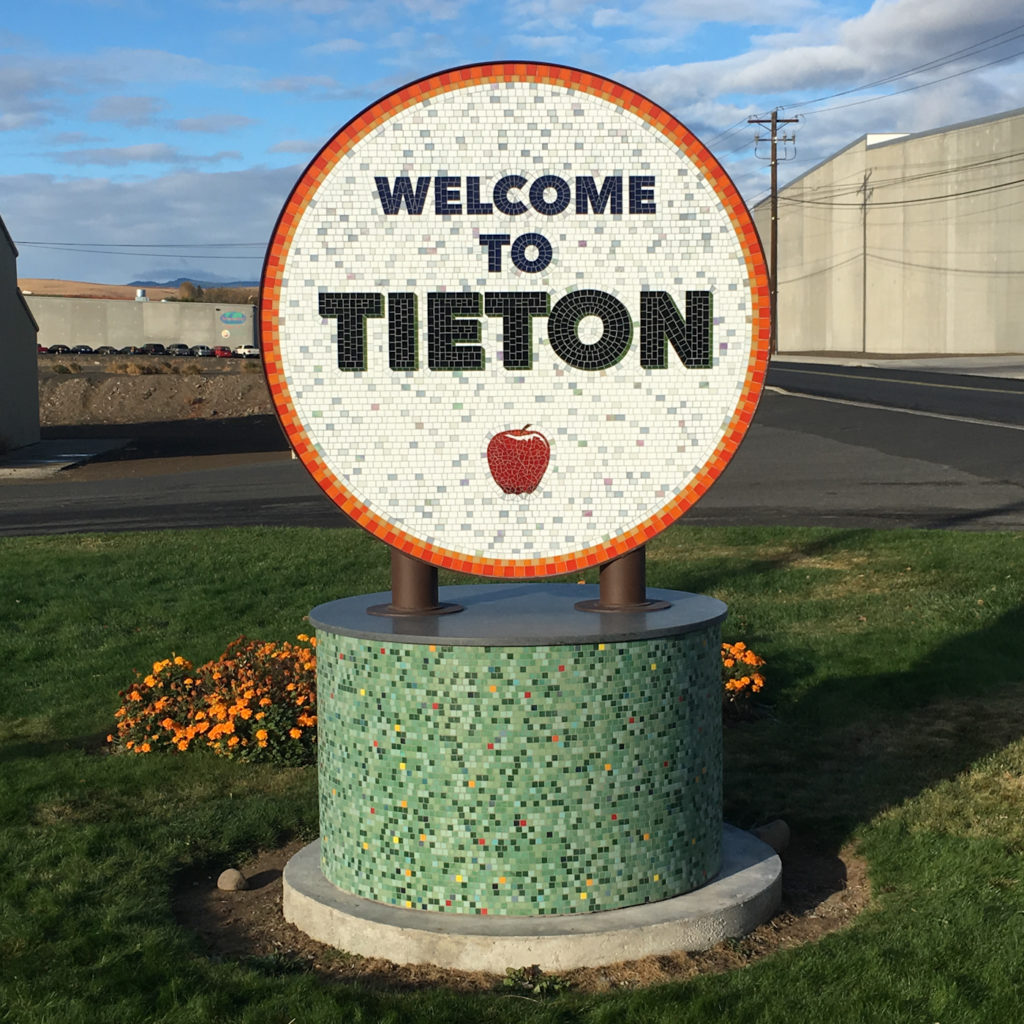
It was the summer of 2005 and Ed Marquand, a Seattle publisher of high-end art books, was in Central Yakima enjoying his fortress of solitude (in truth, a comically rustic 400-square-foot cabin with no electricity or cell service). One afternoon, while on a bike ride through the valley’s striking landscape of arid desert meets fruited plain—Whammo! Evil struck in the form of vicious, bike-tire-gorging goathead thorns (aka, Tribulus terrestris, a species known by its extremely sharp, goat-head shape).
“In ten feet I had 18 punctures,” recalls Marquand, with a lingering mix of awe and outrage. “They’re that diabolical. And both tires just went pfffft!”
Luckily, Marquand found refuge (and a new tire) in the tiny town of Tieton (pronounced TY-uh-tun), pop. 1,200. While undertaking his tire triage, he found himself charmed by the town-square park. He also had plenty of time to take in the rest of downtown Tieton: A has-been Mayberry dominated by shuttered storefronts and derelict warehouses with its classic hardware store downgraded to a tacky Dollar Store and movie house converted into a church playing only to God now. “I spent the rest of the afternoon patching the tires,” says Marquand. “And as I looked around, I thought, ‘These are pretty good buildings…I wonder what could be done in these spaces?’ ”
And like Bruce Wayne designing his bat-cave, an idea for a spectacular artisan works began to take shape in Marquand’s mind. That summer, he and his longtime life partner, Michael Longyear, and later a legion of enlisted creatives (such as Seattle artists Fay Jones and Trimpin) got busy hatching an arts-incubator, community development plan for Tieton.
“I invited all these creative friends and business people involved in architecture, photography, design or art galleries and writing to brainstorm,” says Marquand. “We’d sit in the park [in Tieton] and play a kind of imaginary monopoly. By the end of the summer, we had come to the consensus that we could create this incubator for artisan businesses.”
And in absurdly short order, dream became reality, and a little Yakima Valley town got an unexpected cultural centerpiece, a series of spaces dedicated to handmade crafts—from bookbinding to tile making—called Mighty Tieton.
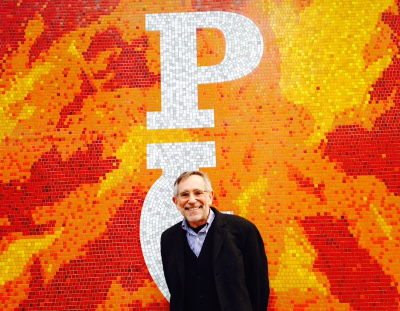
On a recent fall afternoon I find Marquand almost too aptly dusting off a tall bookshelf in his Seattle office. It’s still easy to imagine this publisher (disarmingly energetic, gallingly trim at 65) swiftly scaling Seattle’s art and social realms after arriving from Los Angeles four decades ago. It was 1978, and as luck would have it, Seattle’s nascent art scene was just beginning to take hold. Marquand quickly gained a word-of-mouth reputation as the city’s go-to graphic designer of gallery posters and announcements for the likes of the Seattle Art Museum, and by the mid-’80s had established his own fine art publishing house, Marquand Books. Since then, some 250 museums across the country have placed their treasured content into his capable hands. And every year, Lucia/Marquand (former intern Adrian Lucia became a named partner in 2012) and its staff of 10 publishes around 40 high-quality exhibition catalogs, collection books, museum guides, and letterpress special editions.
Marquand’s knack for re-imagining unloved industrial spaces (beautifully realized at Mighty Tieton) also came in handy with his Seattle office, located on a formerly sketchy corner on Second Avenue and Union Street. Thanks, in part, to a Marquand renovation, today the neighborhood is decidedly more upscale. “We were just looking for a design office and it came with a retail space. It was pretty much an abandoned space because the landlord—they run a parking garage—had no interest in doing the commercial real estate part of it,” he explains. So after tucking Lucia/Marquand into the back, Marquand whipped up a use for his bonus storefront: Paper Hammer, a funky artisanal letterpress paper goods store opened in 2010.
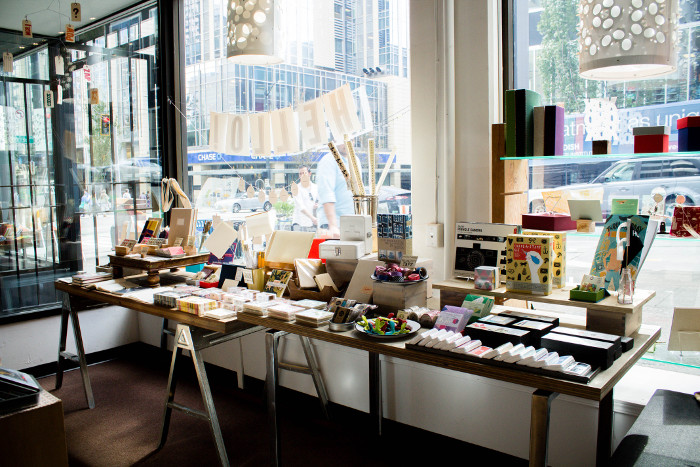
Marquand’s first-ever retail foray was also fortuitous for its cousin east of the Cascades. “When the high-end, handmade art books work dried up during the recession, I didn’t want to lose the people that I had been training for this work [at Mighty Tieton],” he explains. “So we started developing merchandise for Paper Hammer—greeting cards and funny gift items and so forth—to weather the recession.” Those letterpress art prints and cards—most designed by Marquand and created at Mighty Tieton—are now sold across North America.
In Lucia/Marquand’s literally bookish surroundings we feel compelled to speak in library-level hushed tones (book designers at work!). But as Marquand flips over one oooooh-inducing page after another of his latest production (the Seattle Art Museum’s Andrew Wyeth exhibition catalog), I am struck by that Matrix-ish time-shifting feeling. Here we are in Marquand’s slick computer-powered operation amid Seattle’s urban hub-hub, while just a two hour drive away, lies his handmade-centric Old World (some might say, alternative universe), the orchard-encircled workshop of Mighty Tieton.
While not exactly “Spidey” saves-the-day territory, Marquand did rather heroically (or, as his accountant put it, ‘crazily’) risk his own nest egg to pull off the Yakima Valley venture.
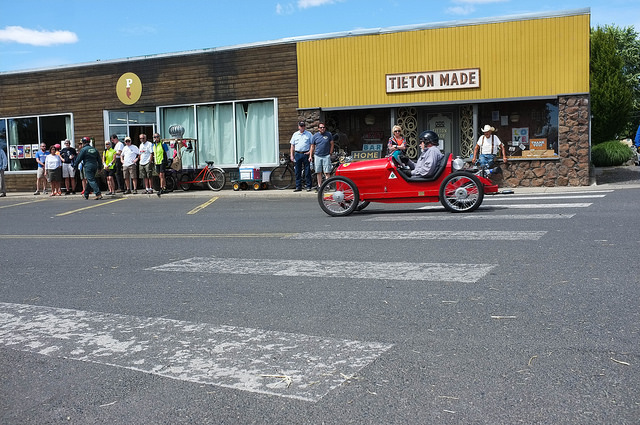
In addition to buying and remodeling a 40,000-square-foot former fruit-packing warehouse to serve as the Mighty Tieton hub (home to the Paper Hammer letterpress studio, a book bindery, and production and event spaces), Marquand also snapped up a smaller warehouse. Seattle architect Philip Christofides converted that warehouse into 14 stylish loft condos, all of which were sold by 2008. “Right now the typical [resale] price is $255,000,” says Marquand, adding with a smile, “For a Seattleite that’s a bargain. And they’re beautiful.” Before these renovation efforts, he notes, Tieton hadn’t had a building permit application in three years. “The town was really circling the drain.”
Marquand’s great experiment wasn’t without spine-testing travails. Say, when the Great Recession hit in 2008, just as Mighty Tieton’s pieces were starting to fall into place.
“Suddenly all this enthusiasm and head of steam we had built up about all these businesses—there was going to be a distillery and a cafe—suddenly everybody had to throw the brakes on those ideas and turn their attention back to their primary assets,” recalls Marquand. “It was total survival mode…I was losing a lot of sleep, but we just covered our costs.”
His gamble has more than paid off in arts and local community dividends. As well as housing the Trimpin Sound Space, where the MacArthur “Genius” and sound engineer creates his astounding music-meets-mechanics installations (viewable by appointment), Mighty Tieton has engendered a slate of art-enabling, community-building annual events. There’s the Student Art Exhibition featuring works by Yakima Valley’s youngest artists, the juried 10x10x10xTieton Exhibition, which attracts small artworks from around the globe, and the popular Holiday Crafts and Antiques Bazaar. The annual Día de los muertos celebration always brings in big crowds.
And what other arts incubator can lay claim to its own go-kart races? Every June, the Tieton Grand Prix has handmade “cycle-karts,” motored by both local and foreign teams, whizzing through Tieton. So very Ka-pow!
Of course, it was more than Tieton’s supply of hipster-beloved warehouses that initially seduced Marquand. He and his fellow outsiders from the big city also were welcomed in by the locals.
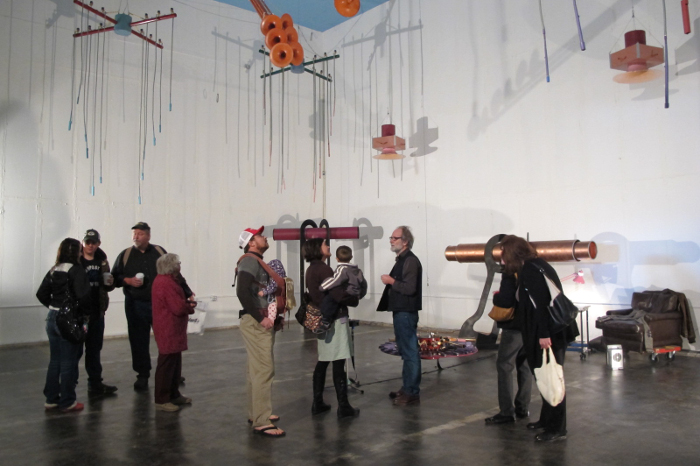
“Nobody kicked up any dust. They were real happy to see something done,” recalls Marquand. It didn’t hurt that he took a respectful, inclusive approach. “We also said, ‘We’re here to add to what is already here. We like what is already here. We like the fact that it was 65 percent Latino.’ We liked it because it felt like a kind of smaller Mexican town. It had personality. And we also realized many of these people come from towns where they know how to make things with their hands. Or they have relatives who make the furniture, make the pots, they make the food, they make things. So, to us, that was a real asset.”
He adds, “Without mentioning any names, there are plenty of communities that are almost all Anglo in the Yakima area, and they’re pretty good at zoning to prevent Latinos from moving in.” (Yakima County itself has the highest percentage of Hispanics in the country, according to Washington’s Employment Security Department.) And Tieton’s dynamic, deeply rooted Latino community was precisely what recommended it to Marquand as a great place set up shop. “I would not have tried to do the same thing in any of the other towns,” he says.
Today, Mighty Tieton produces a veritable bumper crop of creativity. Think of it as an arts community akin to the Sundance Institute in Utah or Marfa in West Texas, except much lesser known and set amid the rich agrarian landscape of central Washington’s Yakima Valley. (FYI, in addition to apples, cherries, and wine grapes, the valley produces more hops than anywhere else in the U.S.) And in Tieton, you’re more likely to find makers, not movie stars, and go-karts, not limos, frequenting the downtown drag.
Though the Mighty Tieton staff is small—only about a dozen trained locals—its versatility and craftsmanship is—apologies—mighty impressive. Workers seamlessly shift from fashioning mod cardboard lighting for the hip Seattle design firm Graypants to pressing out paper goods for Paper Hammer to binding books for Lucia/Marquand.
And Marquand and company are always looking to add to the team’s crafting skill set, and Mighty Tieton’s bottom line. Their newest artisanal expansion is Tieton Mosaics, launched in 2013 with the help of an NEA grant aimed at supporting arts in small towns. “The nice thing about mosaics is that you can plug people in at all different skill levels,” says Marquand. “So you have very talented design typography people at the top all the way down to 10th graders doing routine tile filler, and everybody in between. And another nice thing about mosaics is when you’re done, anybody who had put one tile on that day has a sense of ownership…That’s one of the most beautiful parts about it. It’s a pretty democratic, community-centered thing.”
And it is a Mighty Tieton creation that can be enjoyed by all, since it’s literally part of the town: The craftspeople have dressed up the town’s sidewalks with colorful inlaid mosaics. Currently, they’re re-creating, in glass, historic fruit-crate labels from the valley’s seven prominent local harvesters.
Mighty Tieton also is the fount from which springs Marquand Editions, Lucia/Marquand’s exotic imprint of one-off or small-run handmade titles that can cost up to $5,000 per book. Many of these masterworks now reside in prominent collections. For example, One Tree, commissioned as a gift for the Pope, has pride of place in the Vatican Library. While another act of supernatural bookbindery, The Magician, is a mesmerizing 3-D sleight-of-hand graphic novel by Chris Byrne that took two years to produce. (See its mysteries unfold at: www.marquandeditions.com/magician/ ).
These highly customized books are not only magnificent works of art, but a savvy business move. “I see this as expanding the definition of what art book publishing can be,” says Marquand. “Art books can be offset-printed—those are the conventional art books—but they can also be handmade objects,” he explains. “[And] the more digital things get, the more content is online, I suspected people in the art world are going to want things to become more tactile, because the art world is always going against what everybody else is doing.”
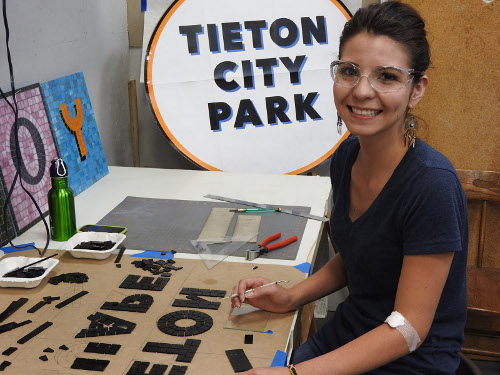
Remaining hands-on himself was one of the main drivers behind creating Mighty Tieton. “I really see myself more as a city guy, but the things I can do in Tieton are much more creatively ambitious because of the space and because of the production help I can hire,” says Marquand. “You can barely afford a desk with a computer on it in Seattle…by having a studio in Tieton, Lucia/Marquand can expand what it does for its clients.”
“[But] without these workers, it’s just cheap space,” says Marquand bluntly of Mighty Tieton. “Without that skill and without their talent, I don’t have anything. As it is, I get to work with really fun, interesting, talented people who add so much to what it is we’re making and it’s giving them an opportunity to express themselves creatively and also professionally in ways they couldn’t have imagined…And I’m interested in building creative enterprises that will hire people from the community because then this idea of economic benefit to both sides of the Cascades becomes real.”
So far, not many artists have flocked to Tieton to settle year-round. However, Mighty Tieton has been a spur for new boutique businesses. A group of locals just converted the erstwhile hardware store into a trio of new artists’ studios. And in addition to Tieton Farm and Creamery, started by two Seattle transplants, there’s the thriving Tieton Cider Works, started by two locals. “When they started in 2008,” says Marquand, “they bottled 200 cases. Last year, they were the eighth largest winery by volume in Washington state.”
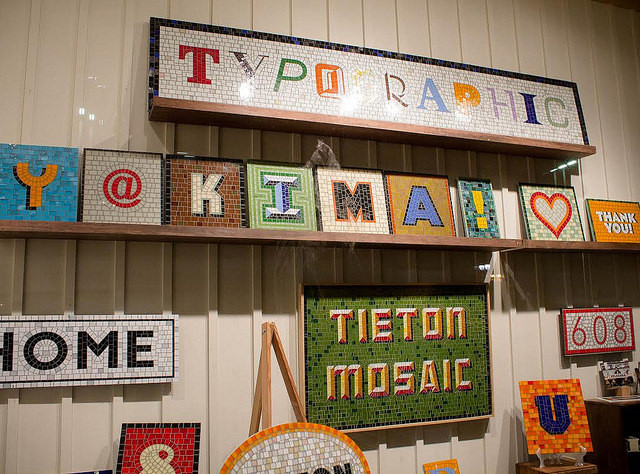
Plus, there’s Mighty Tieton’s more abstract influence. “Art is the bait. It’s the honey that attracts people’s interests and visitors and so on,” says Marquand. “It has also made Tieton feel like a viable place for other people to live, either as a bedroom community for people from Yakima, or as a place to expand a business or as a place to retire to.” (Marquand has recently received feelers regarding an aging-in-place development.)
And there’s no arguing that the town is worlds away from when a certain cyclist was waylaid by a herd of goathead thorns.
“The thing we added that was more important than anything else was hope that the town had a future,” says a reflective Marquand. “People want to live in a place that feels like it has a future. And for us to come in and see in these old buildings some potential and some life made everybody here think, ‘OK. That’s better than just watching the town slowly fade away and die.’ ”
And so back-and-forth between those Cascadian sunsets—and alternate universes—he goes…maybe with just a hint of cape flutter.
Shannon O’Leary is a Seattle native and a veteran freelance writer and editor—she was founding editor of Northwest Home magazine, and also served as editor of Washington Law & Politics magazine and the Seattle Best Places guidebook series. Follow her on Twitter at @veryoleary
All photos courtesy of Mighty Tieton, except image of Ed Marquand in front of Paper Hammer, photo by Shannon O’Leary.
Did you enjoy this feature article? Cascadia Magazine is a reader-supported publication. We rely on your generous financial support to publish quality writing about the Pacific Northwest. Please consider making a donation today!
